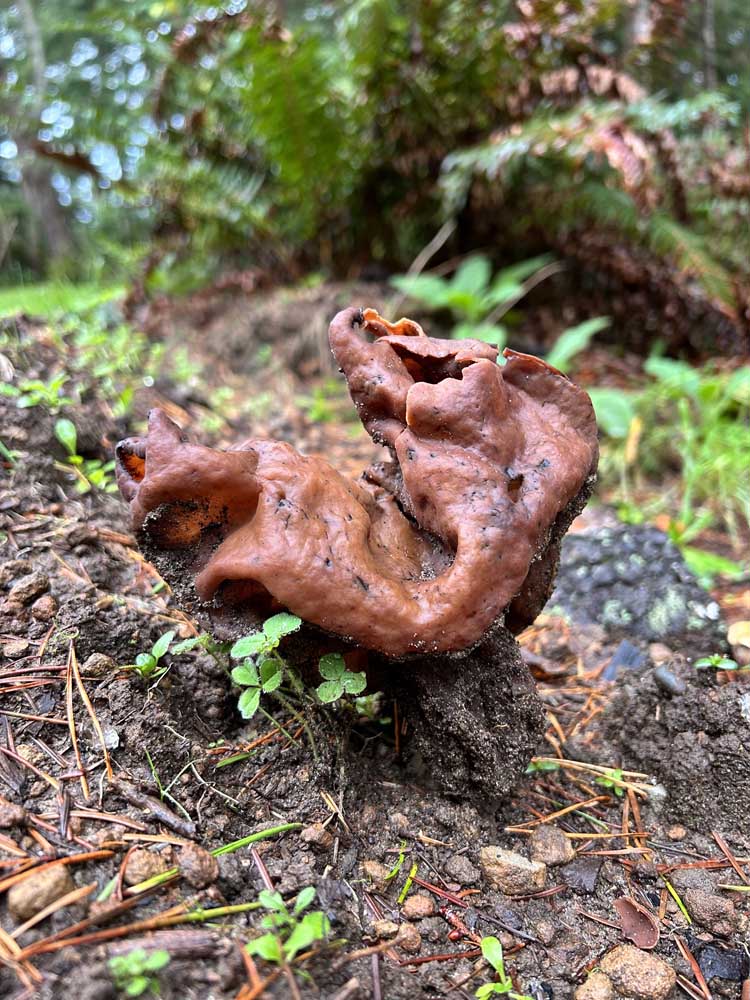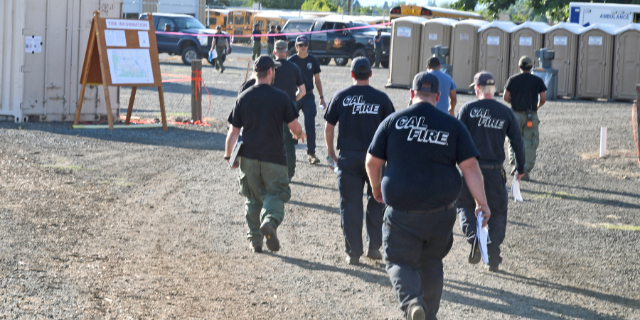GARDEN PLOTS: The seemingly spontaneous generation of mushrooms
Published 6:00 am Wednesday, December 20, 2023

- The author identified this strange-looking mushroom as a member of the Discinaceae family, which includes a poisonous mushroom called the false morel.
“The great mother of all living creatures, the earth, is full of seed in her bowels, and any stirring gives them heat of sun, and being laid near day, they grow.”
Trending
— William Lawson (1553-1635)
in “Men and Gardens,”
Nan Fairbrother, 1956
Trending
Yorkshire clergyman and gardener William Lawson was the first person to write about gardening specifically for women. His book “A New Orchard and Garden” (1618) included a section titled “The Countrie Housewifes Garden,” which became so popular that it was reprinted several times on its own before the next gardening book written expressly for women was published more than a century later.
I find nothing amiss in Lawson’s statement that “the earth is full of seed” which, given “any stirring” and the “heat of sun” will grow. I saw this happen after we cleared out a field of gorse (Ulex europaeus) that had strangled out everything else in its sprawling wake. Once the gorse was gone, seeds that had probably lain dormant in the soil for decades began sprouting.
Yet, Fairbrother had an ax to grind with Lawson, who, she said, was a better writer than he was a scientist. At issue was his belief that “plants were a spontaneous generation of the earth, and that any soil would bring forth the flowers inherent in it without the need of sowing seeds.”
Lawson used the theory of spontaneous generation to explain the ceaseless proliferation of garden weeds, “which earth utters forth of its own accord.” Well, sometimes it does seem as though weeds pop up out of nowhere…
To be fair, Lawson was only repeating the prevailing idea of his time. In fact, Henry David Thoreau (1817-1862) was still arguing against the notion of spontaneous generation when, in 1860, he wrote, “Though I do not believe that a plant will spring up where no seed has been, I have great faith in a seed. Convince me that you have a seed there, and I am prepared to expect wonders.”
It wasn’t until the end of the 19th century that the theory of spontaneous generation, also called abiogenesis, was finally discredited. This was largely due to Louis Pasteur’s experiments with meat broth in flasks that showed organisms could not spontaneously generate within the liquid in the glass but had to be introduced from outside of the flask. Until then, people thought maggots could be produced from spoiled meat.
Last week, I mentioned some of the dubious horticultural ideas set forth by Francis Bacon in the 17th century and recounted by Fairbrother in her book. Not to pick on Sir Francis, but he not only subscribed to the theory of spontaneous generation but, specifically, he believed that mushrooms were an “imperfect plant” that sprang directly from putrid, wet soil. He warned against eating mushrooms because they could cause “nightmares in the stomach” (aka gas).
It wasn’t until 1969 that mushrooms were officially classified as fungi, a kingdom of living organisms separate from animals and plants. We now know mushrooms are the fruiting bodies of large networks of underground fungi originating from spores that are dispersed through the air and settle into soils with lots of decomposing organic material. When soil becomes wet, the spores spread and mushrooms emerge.
The autumn rains have brought up a lot of mushrooms on our woodland property, and lately I’ve been enjoying taking pictures to see if I can identify them. I downloaded an app called Shroom ID to my smartphone and learned that one type of mushroom I found is called Hypomyces lactifluorum, commonly called the lobster mushroom. It’s actually not a mushroom at all but a parasitic fungus that grows on other kinds of edible mushrooms and turns them an orange-red color resembling the outer shell of a cooked lobster. I also identified a poisonous morel look-alike called Gyromitra infula.
The app is fun to use but when I get tired of foraging, I can grow edible mushrooms indoors this winter. I ordered some blue oyster (Pleurotus ostreatus) grain spawn that can be mixed into a sterilized substrate such as chopped straw and placed into a sterilized five-gallon bucket drilled with holes.
Once the bucket has been inoculated with the mushroom spawn, the holes are covered with tape, the top is covered with a lid, and the bucket is placed in a cool spot out of direct sunlight. After about two weeks, the bucket should be fully colonized and it’s time to remove the tape from the holes so fruiting can begin. Spraying the substrate occasionally with water will keep the humidity level high for optimum fruiting and the best harvests. A useful video for growing mushrooms in buckets can be viewed at https://www.youtube.com/watch?v=Cp8Jc1GnDEo.
When the mushrooms begin to emerge from the holes, called pinning, full-sized mushrooms will develop in about 10 days. A second or even a third harvest of mushrooms might be obtained with this method. It’s not exactly spontaneous generation but simple enough to give it a try!









